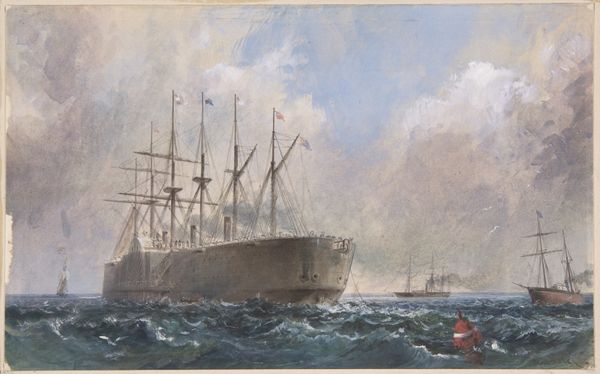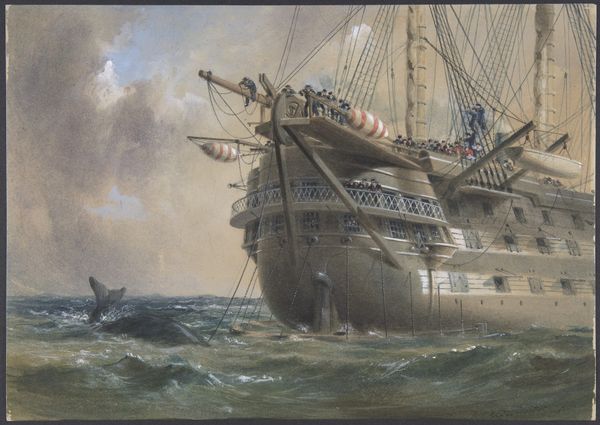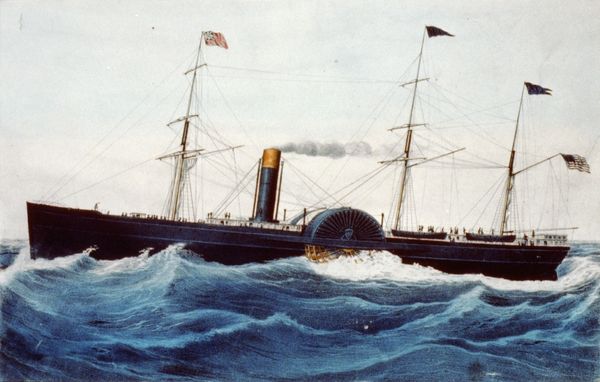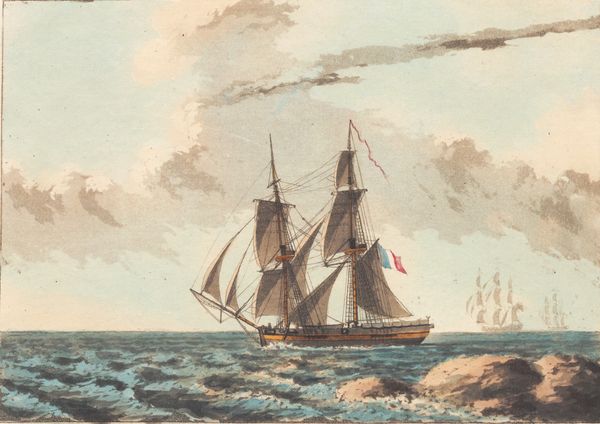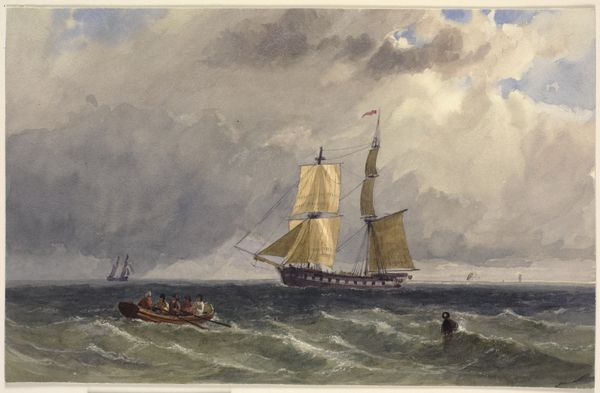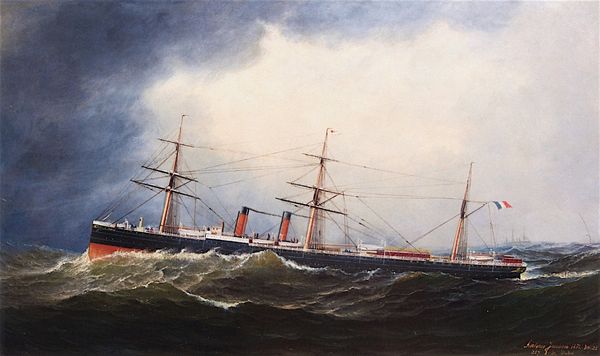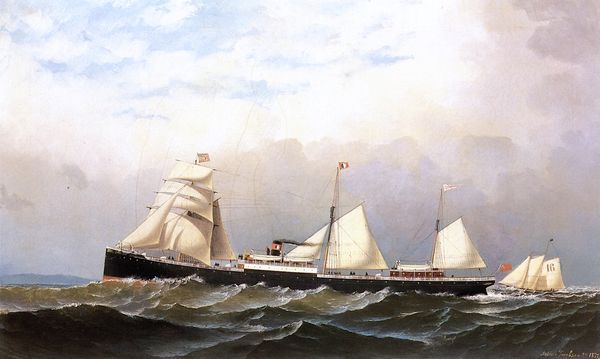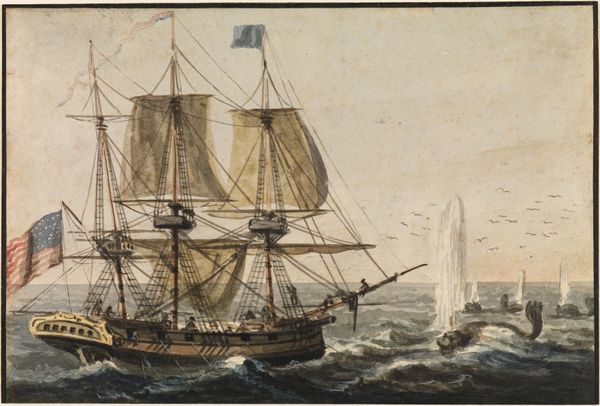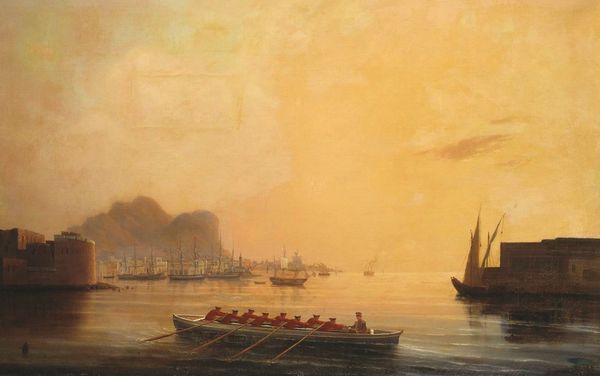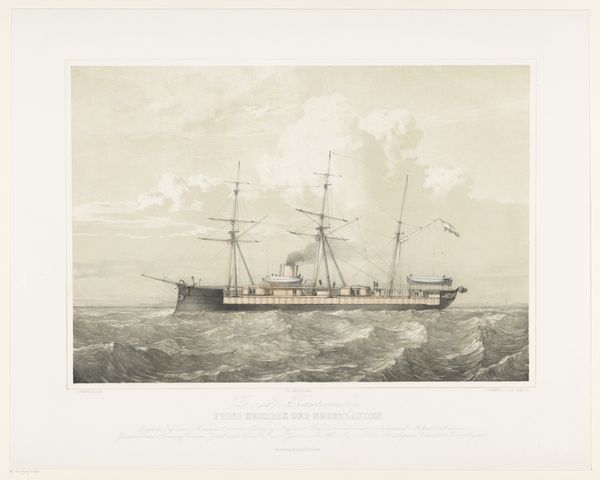
View Looking Aft from the Port Paddle-box on the Deck of the Great Eastern: Showing the Trough for the Cable, etc. 1865 - 1866
0:00
0:00
drawing, print, watercolor
#
drawing
# print
#
landscape
#
watercolor
#
coloured pencil
#
watercolour illustration
#
watercolor
Dimensions: Sheet: 8 15/16 x 6 1/4 in. (22.7 x 15.9 cm)
Copyright: Public Domain
Editor: This watercolor and pencil drawing, created between 1865 and 1866 by Robert Charles Dudley, is titled "View Looking Aft from the Port Paddle-box on the Deck of the Great Eastern: Showing the Trough for the Cable, etc." I’m immediately struck by how industrial it feels, despite the soft medium of watercolor. What does this artwork bring to mind for you? Curator: This work speaks to the intersection of technology, empire, and the visual culture of the Victorian era. The Great Eastern was a marvel of engineering, intended to shrink the world through faster travel and communication. Dudley's print captures a view from the ship highlighting the telegraph cable trough. The muted colors and emphasis on the ship's structure speak to a vision of progress, one heavily promoted and shaped by public institutions. Editor: That's fascinating. The ‘shrinking world’ aspect—can you elaborate on that in relation to its cultural context? Curator: Certainly. The laying of transatlantic cables had an enormous cultural impact. Instant communication reshaped trade, diplomacy, and journalism, furthering colonial projects across continents. Remember that the control and ownership of that technology had implications for global power dynamics. Dudley’s image, therefore, isn't just a picture of a ship; it's an advertisement for an ideology. Who benefitted the most from this era? Editor: That makes me think about the people visible in the drawing. Are they simply anonymous figures, or do they represent something more? Curator: I’d argue their relative anonymity underscores the period's glorification of the collective industrial endeavor over the individual laborer. They are representative, stand-ins for a vast workforce fueling this technological advancement. This image invites us to consider how technological progress gets visualized, whose stories are told, and whose are obscured. Editor: I hadn’t thought about it that way. It’s a little unsettling now. Curator: Precisely! Analyzing the art world's relationship with such depictions can teach us volumes about that society's priorities and power structures. We've definitely uncovered layers of meaning today!
Comments
No comments
Be the first to comment and join the conversation on the ultimate creative platform.
